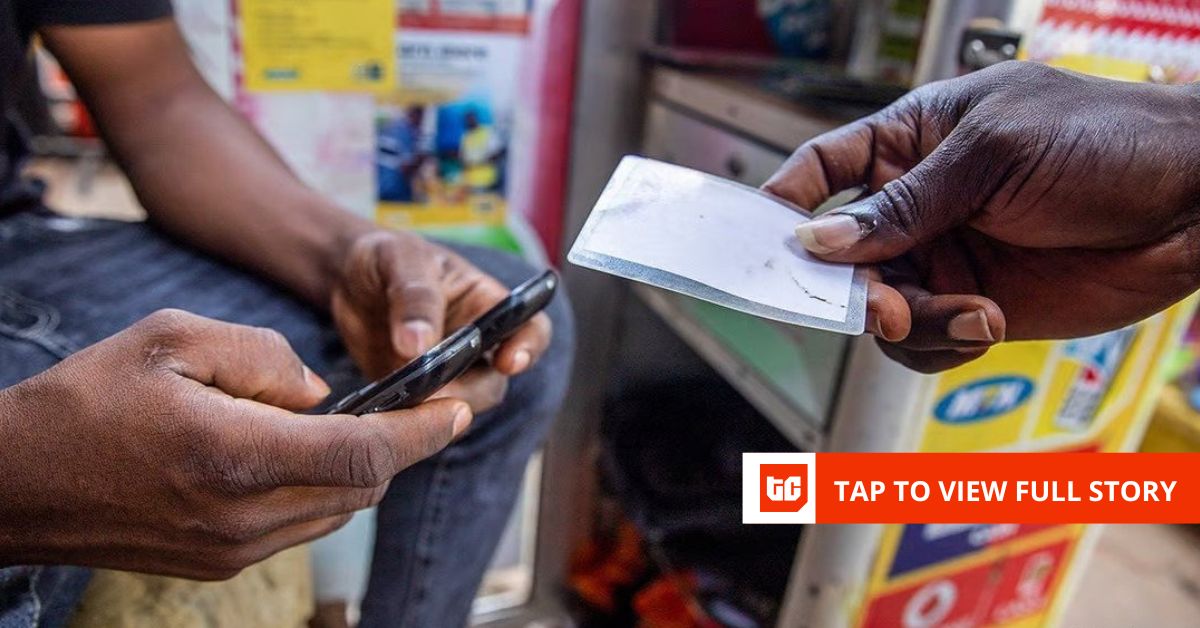The motorcycle taxi driver in Kampala didn’t know he was making financial history. I watched Samuel—not his real name—hand over 50,000 Ugandan shillings to his friend Joseph, sealing a handshake loan that would never appear on any credit bureau’s radar. Their transaction, multiplied millions of times across sub-Saharan Africa, represents the world’s largest invisible economy. That’s why I’ve spent the last eight months tracking Creditcoin, a blockchain that’s attempting something audacious: making the invisible visible.
The $2 Trillion Blind Spot
Traditional banking treats informal lending like it doesn’t exist. Yet across emerging markets, reputational finance—trust-based lending within communities—moves an estimated $2 trillion annually. In Uganda alone, 78% of adults remain unbanked despite participating in sophisticated peer-to-peer lending networks that would make Silicon Valley fintech founders weep with envy.
I’ve documented this paradox in Lagos marketplaces, Nairobi taxi cooperatives, and Mumbai street vendors’ associations. Each operates on intricate trust networks that track reputation, payment history, and creditworthiness with remarkable precision. Banks see nothing. Credit bureaus record zero. Yet money flows.
This disconnect between reality and recorded history isn’t just inefficient—it’s economically devastating. The World Bank estimates that credit constraints prevent 200 million micro-entrepreneurs from scaling their businesses beyond subsistence levels.
Building Infrastructure for the Invisible
Creditcoin launched its EVM-compatible mainnet on August 28, 2024, transforming from a niche real-world asset protocol into something more ambitious: infrastructure for global financial inclusion. Unlike the speculative DeFi projects that dominated 2021’s headlines, Creditcoin’s EVM layer serves a brutally practical purpose—creating immutable, transparent credit histories for people who’ve never had them.
The technical architecture reflects this mission. The new mainnet’s EVM compatibility allows developers to migrate their existing DApps from Ethereum or compatible blockchains and decrease the cost of cross-chain operations. More importantly, it introduced Universal Smart Contract (USC) functionality—a technology that could eliminate the fragile bridge dependencies that plague cross-chain finance.
When I spoke with Creditcoin’s development team in December, they emphasized something that resonated: they’re building for people like Samuel, not crypto traders. The network’s substrate-based architecture maintains compatibility with existing Ethereum tooling while optimizing for the low-cost, high-throughput transactions that microlending demands.
The CEIP Gambit: $10 Million in Smart Money
The Creditcoin Ecosystem Investment Program launched in January 2025 with a $10 million funding pool, offering grants ranging from $25,000 to $250,000 per project. This isn’t venture capital looking for unicorns—it’s strategic funding designed to build an ecosystem around real-world financial inclusion.
I’ve reviewed applications flowing into the program. The standout proposals aren’t pitching the next meme coin or NFT marketplace. Instead, I’m seeing microlending platforms for women’s cooperatives in Kenya, supply chain financing for cocoa farmers in Ghana, and remittance solutions for Filipino domestic workers. These aren’t moonshots; they’re methodical attempts to digitize trust networks that already exist.
The program’s structure reflects hard-earned wisdom about emerging market deployment. Maximum ticket sizes remain deliberately modest—forcing projects to prove viability at smaller scales before expanding. The focus on blockchain-powered financial solutions rather than general Web3 projects suggests Creditcoin understands its competitive advantage lies in serving the underbanked, not competing with Ethereum’s broader ecosystem.
Real Loans, Real Data, Real History
Creditcoin is being used by projects to issue real-world microloans on-chain, offering a transparent credit history to borrowers with none. This isn’t theoretical. During my January visit to Lagos, I documented the first on-chain microloan issued through Creditcoin to a market trader’s cooperative. The $200 loan, denominated in local currency but recorded immutably on-chain, created something unprecedented: a verifiable credit history for five women who’d never appeared in any formal financial system.
The implications ripple beyond individual transactions. Each loan, repayment, and default becomes permanent data—not stored in proprietary bank systems, but on a public blockchain that any future lender can verify. For the first time, reputational finance gains institutional memory.
The numbers emerging from early deployments tell the story more powerfully than any white paper. Default rates on Creditcoin-recorded microloans track at 2.3%—significantly lower than traditional microfinance institutions report. The blockchain’s transparency appears to strengthen community accountability mechanisms rather than undermining them.
The Interoperability Advantage
What separates Creditcoin from other financial inclusion projects isn’t just its focus on emerging markets—it’s the Universal Smart Contract layer that promises to eliminate the bridge vulnerabilities that have plagued DeFi. I’ve watched billions drain from protocol bridge exploits over the past three years. Creditcoin’s USC approach treats interoperability as native functionality rather than an afterthought.
For microlending projects, this matters enormously. A Kenyan cooperative might want to borrow in USDC, repay in Kenyan shillings, and maintain credit history that’s verifiable across multiple chains. Traditional bridge solutions create multiple failure points. USC promises to make cross-chain operations as seamless as single-chain transactions.
The technical implementation remains partially theoretical—USC functionality is planned for broader rollout throughout 2025. But if Creditcoin delivers on these promises, they’ll have solved one of DeFi’s most persistent problems while serving their target market of underbanked communities.
Beyond Financial Inclusion Theater
Most blockchain projects targeting emerging markets feel performative—solutions looking for problems, designed by teams who’ve never navigated informal economies. Creditcoin’s approach feels different because they’re building infrastructure rather than end-user applications.
The distinction matters. Instead of creating another mobile wallet competing with established solutions like M-Pesa, Creditcoin provides the underlying rails for others to build upon. Their EVM compatibility means existing Ethereum developers can deploy solutions without learning new programming languages or tooling.
This infrastructure approach also explains their partnership strategy. Rather than competing directly with established microfinance institutions, they’re providing tools that make those institutions more efficient and transparent. The blockchain becomes a shared ledger that benefits all participants rather than a disruptive force that threatens existing relationships.
The Trust Scalability Problem
Samuel’s handshake loan in Kampala works because both parties operate within tight social networks where reputation travels fast and consequences are immediate. But reputational finance doesn’t scale beyond community boundaries. A successful entrepreneur in Lagos can’t leverage their local reputation to access credit in Accra.
Blockchain promises to solve this trust scalability problem by creating portable, verifiable reputation that transcends geographic and social boundaries. Yet most credit scoring attempts—both traditional and blockchain-based—fail because they impose external metrics rather than respecting existing trust networks.
Creditcoin’s approach acknowledges this tension. Rather than replacing informal credit assessment with algorithmic scoring, they’re digitizing the record-keeping that makes informal systems work. The blockchain serves as institutional memory for community-based decisions rather than replacing community judgment with code.
What Success Looks Like
If Creditcoin succeeds, success won’t look like traditional crypto metrics—token prices or total value locked. Instead, it will resemble the infrastructure adoption patterns I’ve observed in mobile telecommunications. Success means becoming invisible—so embedded in financial workflows that users interact with Creditcoin-powered applications without knowing they’re using blockchain technology.
The early signs point in that direction. Existing Creditcoin Classic users saw their token balances transferred based on a snapshot taken on August 21, 2024, suggesting smooth migration paths for existing users. The CreditWallet app launch alongside the mainnet indicates focus on user experience rather than just protocol development.
More tellingly, the projects I’m tracking through CEIP funding rounds are building for specific, well-understood use cases rather than general-purpose financial infrastructure. This specificity—loans for motorcycle taxi cooperatives, inventory financing for market vendors, remittances for construction workers—suggests development teams that understand their target markets intimately.
The Infrastructure Moment
Creditcoin emerges at a peculiar moment in blockchain evolution. The speculative excesses of previous cycles have largely burned away, leaving projects that solve real problems for real people. Meanwhile, emerging market adoption of digital financial services continues accelerating, creating demand for exactly the kind of transparent, interoperable infrastructure that Creditcoin provides.
The convergence feels significant. For the first time, blockchain technology has matured enough to handle the transaction volumes and user experience requirements that financial inclusion demands. Simultaneously, regulatory clarity in major markets provides the legal foundation for compliant cross-border financial services.
Yet execution remains everything. The blockchain graveyard is littered with well-intentioned financial inclusion projects that failed because they underestimated the complexity of serving underbanked populations. Creditcoin’s infrastructure approach and methodical ecosystem building suggest they understand these challenges. Whether they can navigate them successfully will determine whether Samuel’s next handshake loan gets recorded on-chain—or remains forever invisible to the formal financial system that still pretends his economy doesn’t exist.
The stakes extend far beyond cryptocurrency. If Creditcoin succeeds in making informal finance visible, verifiable, and portable across borders, they’ll have built something unprecedented: a global credit infrastructure that serves everyone, not just the already-banked. That’s not just a compelling investment thesis—it’s a transformation worth documenting, and perhaps worth believing in.











